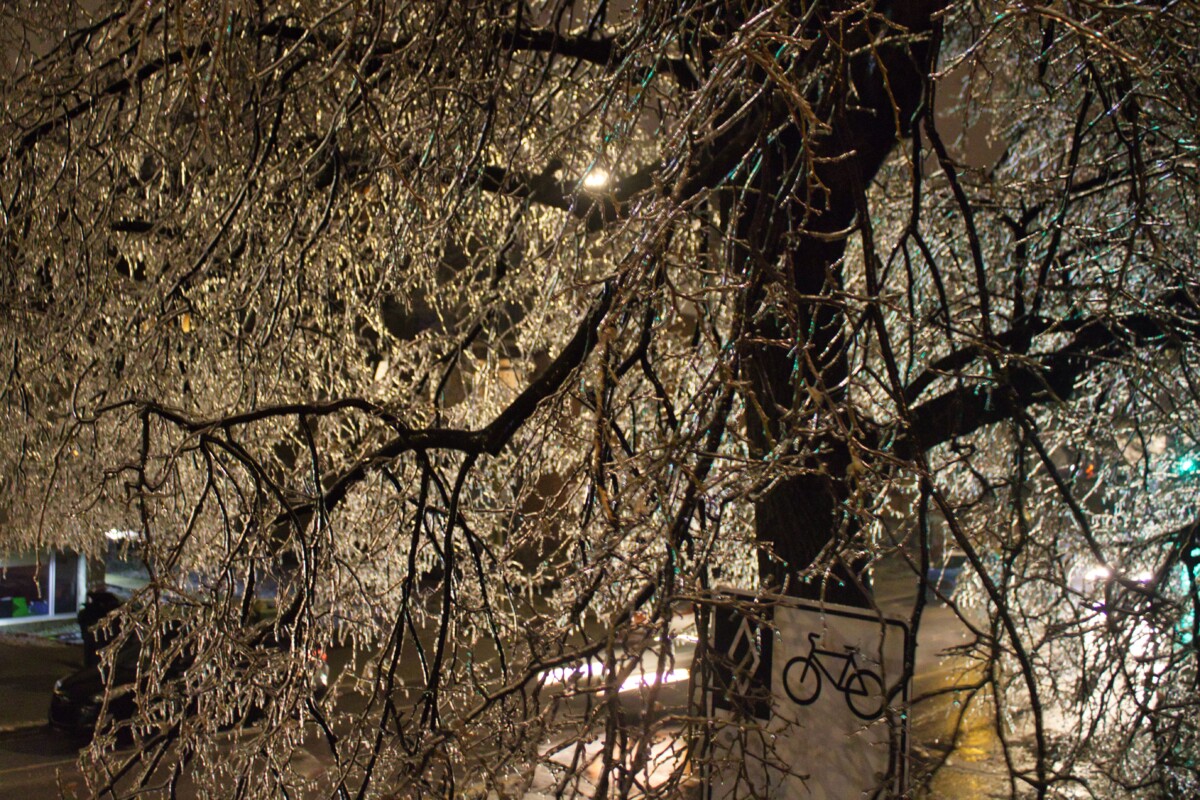Many students had to find new ways to study, as households lost power and internet
As finals approach, students are mustering up the strength to open up their textbooks one last time. However, nature decided to create some bumps in the road.
The city of Montreal ground to a halt two weeks ago due to freezing rain, forcing students to find creative new ways to study. The freezing rain started on Wednesday, April 5, and it soon created a spectacular landscape of ice. On Thursday morning, 1,114,750 households throughout Quebec did not have power.
That night, Concordia alumni Danny Gold was walking home from his French class. As he walked down the street towards his home, he noticed that fallen branches were blocking the way.
He hesitated, wondering if he should climb over them or find another way home. He eventually decided to go over the branches.
“About two seconds after I step over these branches,” he recalled, “I take three steps, I hear ‘snap snap snap’ and then ‘boom!’ five feet behind me, a whole tree branch just came off the top of a tree and slammed on top of a car.”
The branch was around six inches thick, Gold estimated. It was thick enough to crack the windshield of the car behind him.
The timing of the outages also coincided with Passover. Gold explained that offering help is an important part of the holiday, and of Judaism.
“If somebody knocks on your door, randomly, or messages you, someone you know, someone you don’t know, and they’re asking for shelter, for some food, any sort of help that you can provide from your home, it’s the biggest thing in Judaism to invite that person in your home, for nothing.”
Gold lives on the Plateau Mont-Royal, and his apartment was spared by the outages. So when a friend texted him asking for a place to warm up and charge their electronics, Gold was happy to help. He extended the invitation to coworkers, friends, and family. At some point, six people were crowding Gold’s Plateau apartment.
For many Concordia students, losing power and heat was only part of their worries, as the threat of finals loomed on the horizon.
Abilash Gunaratnam, a first-year Concordia science foundations student, lives in the West Island. He lost power from Thursday afternoon to Sunday morning. He also lost cell reception at the beginning of the outage.
“The first two days, I was waiting for the power to come back on,” he said. “I had to get back to my school work, exams were coming, and I was stressed out. Exams weren’t too far away, and I needed to study.”
Gunaratnam initially thought the power would be back by early Friday morning. When that did not happen, he and his family decided to go stay with family members in Laval.
“I was already behind, and then I got even more behind,” he said. “Since I had no power, I couldn’t study, so on Saturday I had to cover eight chapters [twice as much as planned.] And I had work on that day too.”
Matthew Erskine is a first-year computer science student. He lives in Pierrefonds and lost power from Wednesday night to Saturday morning.
Erskine was not overly worried about losing study time over the weekend, since most of his final assignments and exams were at the very end of the semester. He decided to go into school on Thursday morning to study and charge his electronics.
“After the power came back on, I was just focused on not stressing too much,” he said.
“In the grand scheme of things, it was just an inconvenience,” he added. “But needing food, that was the number one thing. Everything in our fridge was basically gone.”
Concordia itself was spared from the worst of the storm. According to the university’s spokesperson, Vannina Maestracci, neither campus lost power, and the facilities were open to students in need of power or internet.
Further accommodations like extensions were left in the hands of professors, said Maestracci, as the effects of the outages were very different throughout the island.
